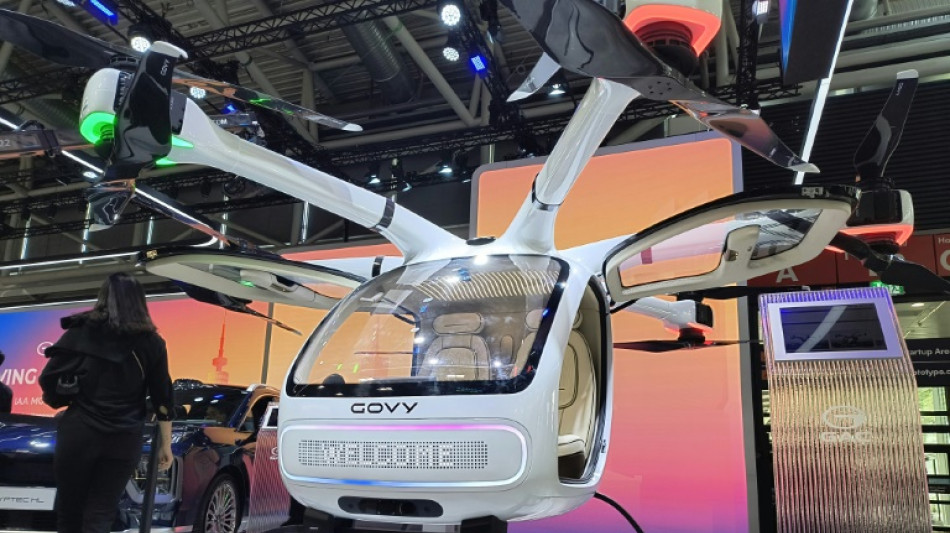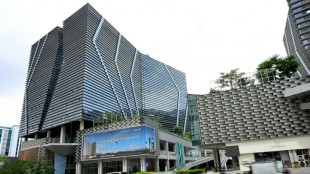

Robot dogs, flying cars: five takeaways from the Munich auto show
From "flying cars" to robots and self-driving buses, here are some of the innovations spotted at this week's Munich auto fair, IAA Mobility, one of the world's biggest:
'Give cars wings'
Chinese brands showcased their efforts to create "flying cars", small electric aircraft powered by multiple rotors designed for short journeys.
"We want to give the car wings," said Wang Tan, co-founder of carmaker Xpeng's aeronautical unit.
Xpeng's Land Aircraft Carrier, an electric car that contains a fold-out, two-seat electric aircraft, should go into mass production in 2026 and be on sale in China for less than 2 million yuan ($281,000).
Uses include rescue from locations where access is difficult, such as in heavy traffic or from tall buildings, Wang said.
GAC's flying car unit Govy meanwhile showed off its AirCab, a two-seater self-driving electric aircraft with a top-speed of 120 km/h and a range of up to 30 kilometres.
"It is quieter than a helicopter and better meets people's needs," Govy spokeswoman Li Shuhan said. "It's also cheaper."
About 1,500 AirCabs are on order at 1.68 million yuan each.
Robot dogs (and their batteries)
Covered in yellow fur, and with big googly eyes and a red felt tongue, the Go2 robotic dog looks cute and cuddly -- but it is more than just a gimmick.
"For dangerous work you need robots", said Todd Zhang from Eve Energy, the Chinese company that makes batteries for the Go2, which is built by another Chinese outfit, Unitree Robotics.
"In the future we'll send robotic dogs into dangerous environments rather than human beings."
Eve Energy also supplies German carmakers like BMW and Porsche, highlighting China's grip on the supply chain for electric cars.
Wolf on wheels
Eager to show that Europeans can innovate too, Austrian Wolfgang Podleiszek is working on a funky two-wheeled electric car that steers like a segway and needs the driver to lean into corners.
"We've tried to send a signal for Europe, that we can once again dream and do something new and innovative," he said.
Podleiszek founded Wolf eMobility last year, and was on the hunt for investors at the motor show to build a prototype.
"Once people can try it out and see just how fun it is, I think the rest will follow," he said.
But his small firm is in the sights of German giant Volkswagen, who have taken the company to court on the grounds that "Wolf" in German sounds too similar to Volkswagen's Golf car.
But Podleiszek says "our chances are not bad" in the dispute.
New buses for older people
Companies including Germany's Holon and Estonia's Auve Tech displayed small self-driving buses, designed for routes where larger buses with drivers could be too expensive.
Auve Tech has 25 vehicles on the road, 20 of which are in Japan, co-founder Johannes Mossov told AFP, helped by a "strong push" from the government there.
"It's logical because of the ageing population," he said. "People need public transport to be more accessible for people who might not want to drive their personal car or walk long distances."
"Europe will be similar in 10 to 15 years," he added.
Robot people
Chinese electric-vehicle maker Xpeng was showcasing its humanoid robot, called Iron, at the fair.
Over 30 Irons are currently in training, mostly on the carmaker's production line, although some also help out with showroom sales.
"We hope we can let robots work on the production line by the end of this year," Shi Xiaoxin, Xpeng's head of robotics, told AFP.
And by the end of next year, they will likely be meeting and greeting customers, he said.
Iron is trained using motion sensors worn by employees, which gather data on human movement.
O.Greco--RTC


